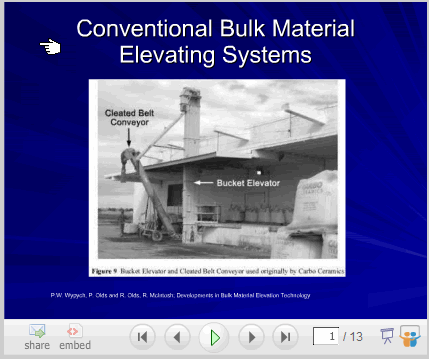
Back in the 3rd Century B.C, around the same period that the Carthaginian general Hannibal made his epic crossing of the Alps from Spain to Italy atop war elephants, another great feat was accomplished with Archimedes invention of the screw pump or Archimedean screw.
This same invention, after surviving over 2,300 years of applications is still used today in industrial facilities moving bulk solids throughout the manufacturing process. Yet an even greater and more impossible task than Hannibal’s crossing of the Alps is attempting to minimize the generation of combustible dust during the manufacturing process, which creates a potentially explosive atmosphere when concentrations of dust reach explosive limits of minimum explosive concentrations (MEC)
Throughout 2008, over 200 combustible dust related fires and explosion occurred in the manufacturing, non-manufacturing, grain, and utility sectors. Many of these incidents occurred in the transport process; where bucket elevators, screw elevators, pneumatic conveyors and inclined belt conveyors where in the process of conveying particulate solids (bulk solids), that generated combustible dust.
Like Hannibal’s famous quotation, "We will either find a way, or make one.” Eventually sometime in the process, combustible dust will either find an ignition source or make one, such as through an electrostatic discharge to initiate a deflagration. This is where explosion prevention and mitigation best engineering practices comes into the story with reducing the probability of occurrence and minimizing the severity of ensuing combustible dust related fires and explosions.
But suppose explosion prevention could inherently be designed into the process that transports bulk solids? Instead of, as now is the case, having a more costly explosion prevention engineering control measure, separate from the transport process.
It’s been a tough battle for all stakeholders in minimizing combustible dust hazards in the workplace. Along the way dust explosions and flash fires at subsonic speed continue to occur frequently in industrial settings causing hundreds of fatalities, injuries and adverse economic damage.
A monumental victory in preventing combustible dust explosions occurred in 2003, when inventor Peter Olds, an Australian, from Maryborough in Queensland developed the Vertical Bulk Material Conveyor Olds Elevator in his foundry as an alternative to an inclined screw conveyor. Which at the same time with its full-bore natural choke concept by inherent design isolates ignition and oxygen sources from completing the troublesome fire triangle and ensuing dust explosion.
Additional potential solutions in preventing and mitigating combustible dust related fires and explosion can be found through resources around the world with our global trading partners. Stakeholders in the United States are fortunate that Richard McIntosh
Facility owners and managers are even more aware of the hazards of combustible dust with the reintroduction of the combustible dust bill, which was initated last year following the catastrophic Imperial Sugar Refinery sugar dust explosion. To minimize the generation of combustible dust and at the same time prevent combustible dust explosions as bulks solids are conveyed, an innovative solution with the Olds Elevator is an effective and cost efficient solution. Contact Olds Elevator today for additional information on how the combustible dust hazards of your process stream can be minimized with utilization of the full-bore natural choke technology of the Olds Elevator.
Resources
Developments in Bulk Material Elevation Technology
Preventing Grain Dust Explosions











 RSS Feed Subscribe
RSS Feed Subscribe
No comments:
Post a Comment